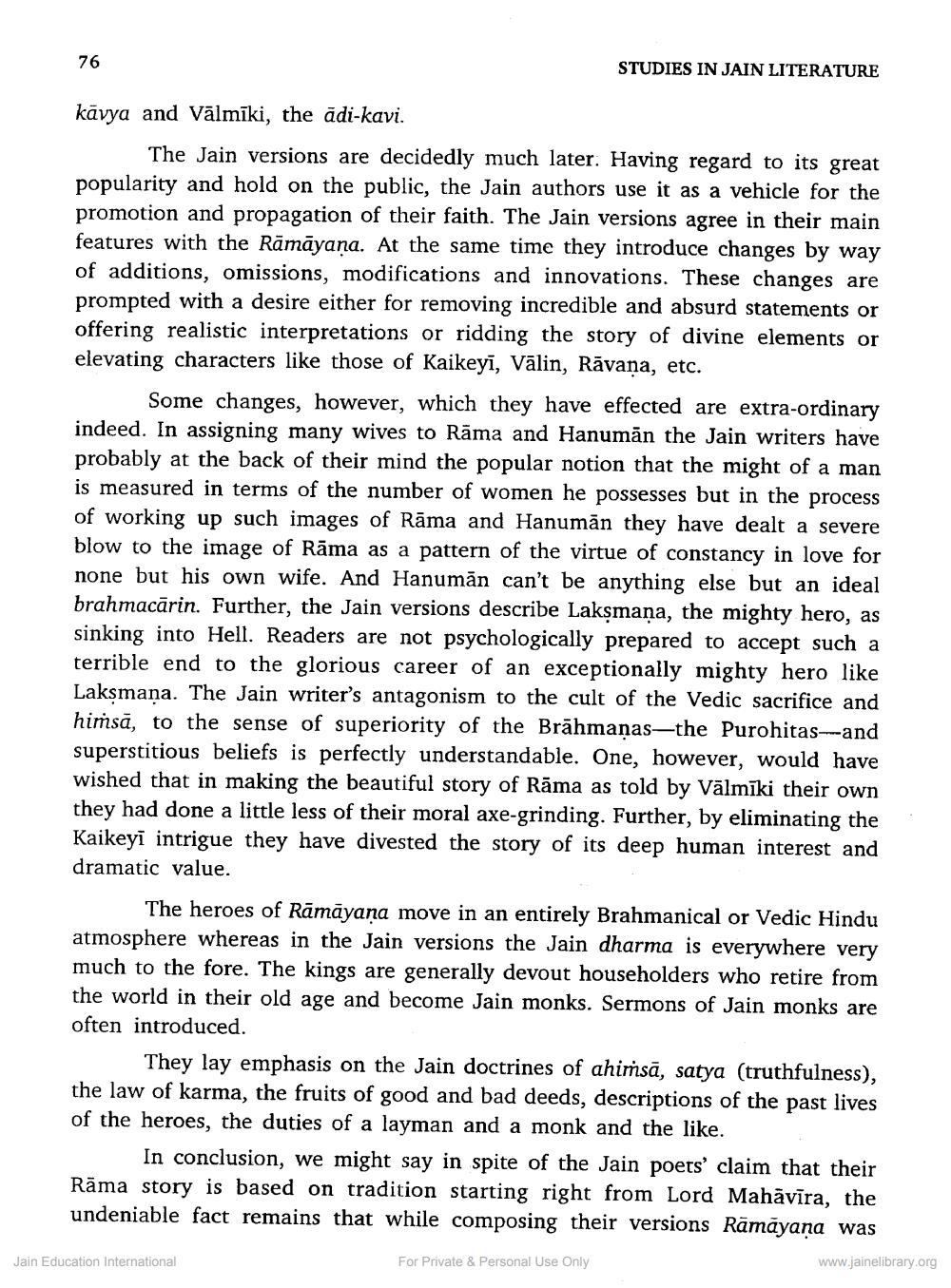________________
76
STUDIES IN JAIN LITERATURE
kāvya and Vālmīki, the ādi-kavi.
The Jain versions are decidedly much later. Having regard to its great popularity and hold on the public, the Jain authors use it as a vehicle for the promotion and propagation of their faith. The Jain versions agree in their main features with the Rāmāyaṇa. At the same time they introduce changes by way of additions, omissions, modifications and innovations. These changes are prompted with a desire either for removing incredible and absurd statements or offering realistic interpretations or ridding the story of divine elements or elevating characters like those of Kaikeyī, Välin, Rāvaṇa, etc.
Some changes, however, which they have effected are extra-ordinary indeed. In assigning many wives to Rāma and Hanuman the Jain writers have probably at the back of their mind the popular notion that the might of a man is measured in terms of the number of women he possesses but in the process of working up such images of Rama and Hanuman they have dealt a severe blow to the image of Rāma as a pattern of the virtue of constancy in love for none but his own wife. And Hanuman can't be anything else but an ideal brahmacarin. Further, the Jain versions describe Lakṣmaṇa, the mighty hero, as sinking into Hell. Readers are not psychologically prepared to accept such a terrible end to the glorious career of an exceptionally mighty hero like Lakṣmaṇa. The Jain writer's antagonism to the cult of the Vedic sacrifice and himsā, to the sense of superiority of the Brāhmaṇas-the Purohitas-and superstitious beliefs is perfectly understandable. One, however, would have wished that in making the beautiful story of Rama as told by Valmiki their own they had done a little less of their moral axe-grinding. Further, by eliminating the Kaikeyi intrigue they have divested the story of its deep human interest and dramatic value.
The heroes of Rāmāyaṇa move in an entirely Brahmanical or Vedic Hindu atmosphere whereas in the Jain versions the Jain dharma is everywhere very much to the fore. The kings are generally devout householders who retire from the world in their old age and become Jain monks. Sermons of Jain monks are often introduced.
They lay emphasis on the Jain doctrines of ahimsā, satya (truthfulness), the law of karma, the fruits of good and bad deeds, descriptions of the past lives of the heroes, the duties of a layman and a monk and the like.
In conclusion, we might say in spite of the Jain poets' claim that their Rāma story is based on tradition starting right from Lord Mahāvīra, the undeniable fact remains that while composing their versions Rāmāyaṇa was
For Private & Personal Use Only
www.jainelibrary.org
Jain Education International




